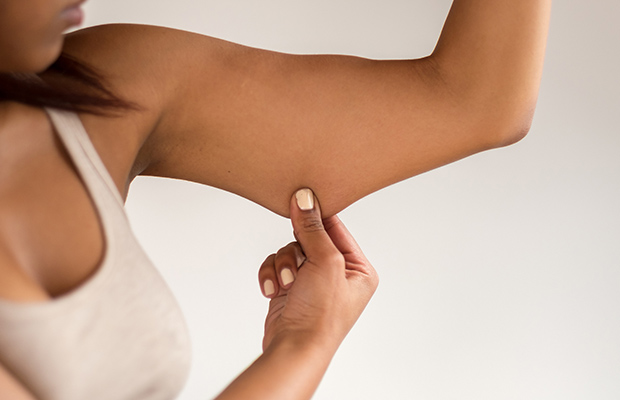The 6 Best Methods for Measuring Body Fat Percentage

Photo: Twenty20
Whether you’re striving for a beach-ready body or aiming for a healthy longevity, understanding your body composition is crucial. This metric measures the ratio of fat mass to lean tissue, encompassing bone, muscle, ligaments, tendons, and organs. Higher body fat percentages have been associated with an elevated risk of diabetes, high blood pressure, and other cardiovascular issues. Furthermore, the distribution of body fat is also significant; increased abdominal fat, for example, has been linked to higher risks of heart disease and cancer compared to fat distributed across other areas of the body.
Various methods exist for measuring body composition, from quick and relatively painless to detailed and comprehensive. These techniques help individuals establish baseline values for body composition and future goals. However, the accuracy of these methods varies. While some can calculate body fat percentage with precision, others entail a wider margin of error. To guide you through the different techniques, we present the top six methods for measuring body fat percentage, including the advantages and disadvantages of each.
Table of Contents
How to Measure Body Fat Percentage

Photo: Pond5
1. Skin Calipers
This method involves a skin fold assessment performed using skin calipers at either three, four, or seven sites on the body. The technician conducting the test pinches the skin and uses the calipers to measure the thickness of the skin fold at each site. By inputting these measurements into a formula, practitioners can estimate body fat percentage.
The Pros
Skin calipers are relatively inexpensive and easily accessible, commonly found in gyms and used by many trainers. They can also be purchased for at-home testing. A skin fold assessment can be completed quickly and almost anywhere.
The Cons
This method’s accuracy relies on the technician’s experience and consistent measurements, and the margins for error can vary. Additionally, the distribution of body fat can affect the accuracy, since measurements are taken only from specific body parts.

Photo: Pond5
2. Bioelectrical Impedance
Bioelectrical impedance scales and monitors analyze body fat percentage by sending electrical impulses through the body and measuring their return rate. The varying conductivities of lean and fatty tissues enable the estimation of body fat percentage.
The Pros
Bioelectrical impedance devices are affordable and easy to use, providing quick measurements and often integrated into regular weight scales.
The Cons
The accuracy of bioelectrical impedance measurements can be affected by factors such as hydration levels, meal timing, and exercise, leading to potential inaccuracies in readings.
The 6 Best Ways to Measure Body Fat Percentage
With a multitude of methods available to measure body fat percentage, it’s essential to find the one that suits your needs and preferences. Read on to discover the pros and cons of various body fat measurement techniques.
1. Bioelectrical Impedance Analysis (BIA)
Bioelectrical Impedance Analysis (BIA) involves sending a weak electrical current through the body and measuring the resistance to it. It’s fast, non-invasive, and often found in household scales, making it a convenient option for many people. However, factors like hydration levels and recent physical activity can affect its accuracy.
2. Skin Calipers
Using skin calipers to measure skinfold thickness allows for the calculation of body fat percentage. While it’s a simple and affordable method, accuracy largely depends on the skill level of the person using the calipers and the consistency of the pinch site in the measurements. Also, the subcutaneous fat measured may not represent overall body fat accurately due to individual variations in fat distribution.
3. Hydrostatic Weighing
Hydrostatic weighing, or underwater weighing, involves comparing a subject’s bodyweight inside and outside water to calculate body density. It is a highly accurate method often referred to as the gold standard for measuring body composition. However, it can be inconvenient, expensive, and uncomfortable for some individuals to sit submerged underwater.
4. DEXA (Dual-Energy X-Ray Absorptiometry)
DEXA scanning uses X-ray technology to measure bone mineral density and body composition. While it provides accurate results, it requires an appointment with a medical professional and can be relatively costly.
5. Air-Displacement Plethysmography
Air-displacement plethysmography determines body density by measuring air displacement when a participant sits in a small machine, such as the “BOD Pod.” This method offers comfort for many individuals, but it may not be easily accessible and can involve a significant cost.
6. 3D Body Scan
Technological advancements have made 3D body scanning more accessible. Devices such as Naked and mPort use infrared light and circumference measurements to provide body fat and muscle mass readings. While it offers convenience and accuracy, obtaining consistent results may require specific clothing and posture during scanning.
Consider the Full Picture
It’s important to remember that regardless of the method chosen, results take time and should not be monitored too frequently. Alongside body fat percentage, other factors such as sleep quality, energy levels, and overall well-being should also be prioritized on the journey to health and fitness. Find a method that works for you, and use it as a tool to measure progress and inform lifestyle adjustments.
It’s crucial to consult health and fitness professionals to determine the most suitable method for your individual needs. Remember, body composition measurement should complement a holistic approach to overall health and well-being.
Originally posted on December 30, 2013. Updated February 2018. Additional writing and reporting by Mallory Creveling.



